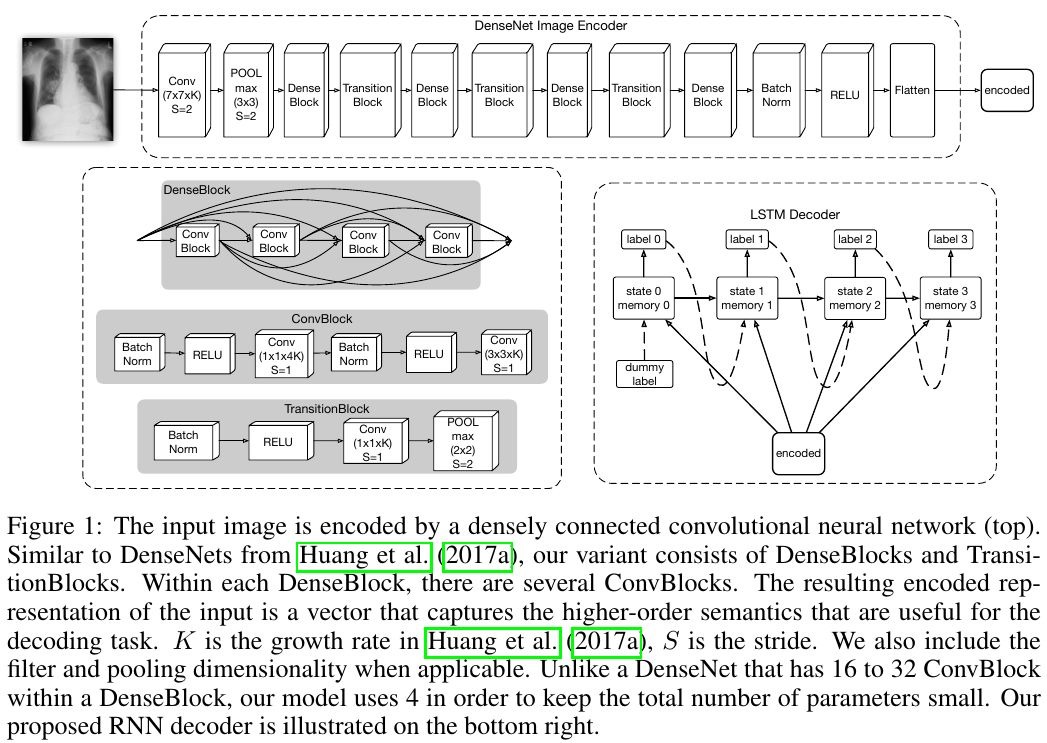Keyword [ChestX-ray14]
Yao L, Poblenz E, Dagunts D, et al. Learning to diagnose from scratch by exploiting dependencies among labels[J]. arXiv preprint arXiv:1710.10501, 2017.
1. Overview
1.1. Motivation
- pre-trained ImageNet models may introduce unintended biases which are undesirable in a clinical setting
- there exists dependencies among labels
- the need for pre-training may be safely removed when there are sufficient medical data available
In this paper
- DenseNet Image Encoder
- LSTM Decoder. using LSTM to leverage interdependencies among target lables
- without pre-training
1.2. Dependency
- complex interactions between abnormal patterns frequently have significant clinical meaning that provides radiologist with additional context
- cardiomegaly (心脏扩大) is more like to additionally have pulmonary edema (肺水肿).
- edema futher predicate the possible presence of both consolidation (实变) and a pleural effusion (积液)
1.3. Related Work
1.3.1. Model Inter-label Dependencies
- loss function implicitly represent dependencies
- receive a subset of the previous prediction
- RNN
1.3.2. OpenI dataset
- with 7,000 images, smaller and less representative than ChestX-ray8
2. Algorithm
2.1. Model

2.1.1. Encoder

2.1.2. Decoder

- initial state based on x_enc
- f_h0, f_c0 with one hidden layer

- LSTM

- y. GT with fixed ordering
2.2. Loss Function

3. Experiments
3.1. Details
- randomly split. 70%, 10%, 20%
- ChestX-ray8 noticed insignificant performance difference with different random split
- 512x512
- randomly translate 4 directions by 25 pixel
- randomly rotate [-15, 15]
- randomly scale [80%, 120%]
- early stop based on valiadation
- weighted cross-entropy loss
- without pre-trained
3.2. Metric
- NLL
- AUC
- DICE
- Per-example sensitivity and specificity (PESS)
- Per-class sensitivity and specificity (PCSS)
3.3. Comparison


